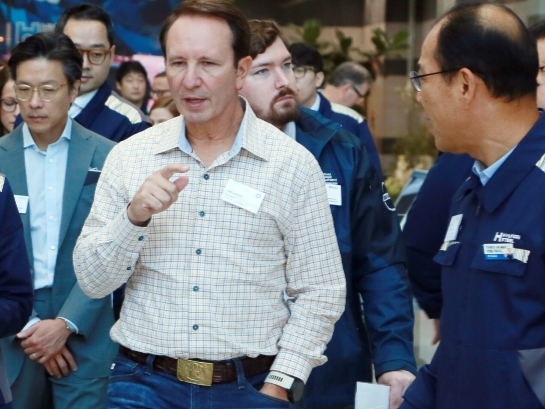Unlocking Value Through Facility Management
ABM Industries CEO Scott Salmirs sheds light on trends in facility management strategies and discusses best practices for improving asset performance.
Whether improving a property’s energy efficiency or implementing cost-saving technology, effective facility management can be a vital factor in property operations.
In an interview with Commercial Property Executive, ABM Industries CEO Scott Salmirs discussed the role of facility management in the success of an investment. Founded in 1909, ABM manages a diverse portfolio across the U.S., Canada and the U.K., and has annual revenues exceeding $6 billion.
What are some of the most commonly overlooked preventive maintenance measures in commercial real estate?
Salmirs: Sophisticated preventative maintenance maximizes the efficiency and extends the life of all of a property’s underlying assets. What we’ll sometimes find when beginning work with a new client is that previous preventative maintenance work has been limited and often focused on mechanical and electrical systems while neglecting surfaces such as floors, carpets, roofs and parking areas.
Our program takes into account exactly how frequently and in what capacity every building asset is being used on a daily basis and we execute preventive maintenance work accordingly. Since exact systems usage is something that can evolve over time, we are constantly evaluating and assessing systems in the properties that we service to help our customers determine where resources can be reallocated from the less-used to the heavily used.
What are some of the most efficient ways a facility manager can increase a property’s value?
Salmirs: A property’s value inevitably rises when it helps the occupants to recruit and retain talent and maximize efficiency and productivity. Best-in-class facilities management helps achieve that goal. For this reason, property owners across all building types—high-rise, low-rise, suburban and mixed-use properties—are increasingly outsourcing their facilities’ management needs to specialist providers.
How can effective facility management increase the energy efficiency of a property?
Salmirs: Facilities management dramatically impacts the energy efficiency of a property and plays a key role in meeting property owners’ larger sustainability objectives. As a member of the U.S. Green Building Council, we work with property owners to implement specific processes and changes in their buildings that allow them to achieve LEED certification.
Through our energy solutions program, we have reduced clients’ energy use by more than 23 percent on average and installed more than 8,000 electric vehicle charging ports in buildings nationwide. What we’ve seen is that even relatively minor modifications to existing or outdated facilities management processes can have quite extensive environmental benefits.
How have advances in technology over the past five years impacted facility management operations?
Salmirs: There are two advances from the last five years that are driving change today. The first is mobile technology. It has significantly improved the efficiency and connectivity of our people out in the field. Tasks that previously required a PC can now be done from a cell phone or tablet on-location where the work is being carried out. Technicians can easily call up drawings or videos when undertaking work, review the asset history and input data into the system in real time. Camera and geolocation functionality on these devices has allowed for more detailed issue reporting and faster response activation.
Sophisticated data analytics is the second advancement that is changing the game in facilities management. We can now leverage data from our systems and turn it into actionable insights in ways we couldn’t years ago.
In what ways do you anticipate the role of facility managers changing in the next few years?
Salmirs: The role of facilities management is evolving. It’s becoming much more sophisticated with a broader scope that involves every aspect of asset management and a greater focus on the workplace experience a building provides to its occupants. Technology will play a big part in addressing these complexities. … Something really cool that we’re doing right now is using beacon technology. This technology tells us when a bathroom needs to be serviced or when a trash can needs to be emptied. That’s how we see innovation driving the future of facilities management: saving time and saving our clients’ money.









You must be logged in to post a comment.